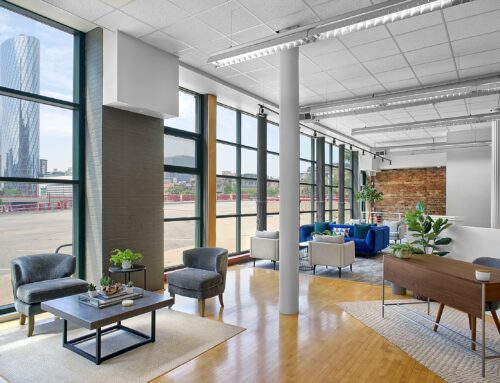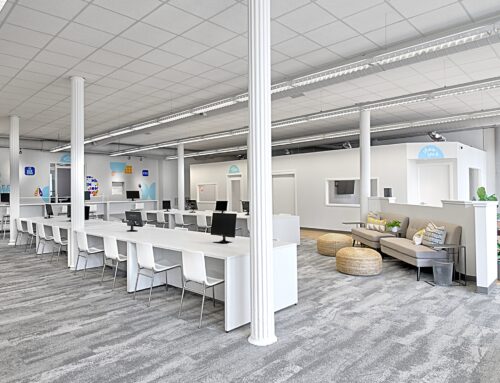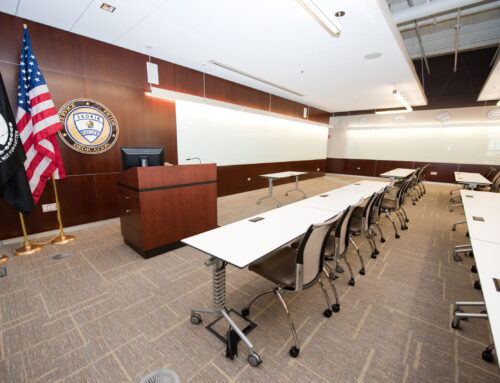Pros and Cons of a Collaborative Workspace

Of course, we’re talking about collaborative workspaces (a.k.a. shared workspaces), in which all employees can interact with each other and various resources, tools and other elements as part of a single, interconnected environment.
However, while there are plenty of reasons to love collaborative workspaces, there are some limitations and potential drawbacks as well. Below, we highlight the top 3 pros and cons to help you decide if it’s the right configuration for your team.
Collaborative Workspaces: PROS
- More Interaction
A big challenge that many businesses face is that their employees and teams work in disconnected silos or “islands of activity”. Collaborative workspaces fundamentally promote interaction and integration. This keeps walls – both physical and conceptual – from keeping people and groups apart, when they’re better off sharing and supporting each other.
- More Democratic Layout
In traditional layouts, senior level staff members are typically given prime office spaces – such as the proverbial “corner office” – while other team members, and especially new hires, are given a far less glorious places to work. A collaborative workspace eschews this hierarchy, and replaces it with a much more democratic design. Yes, some staff will likely still have better tools and toys, but a bigger monitor or futuristic ergonomic chair is a far cry from the corner office.
- More Cost Effective
A collaborative workspace requires fewer walls than a more traditional workspace, which usually means more efficient HVAC and lighting systems (because of improved airflow and more natural light). In addition, employees can more easily share equipment – such as printers, copiers, and so on – which means that fewer need to be purchased and maintained.
Collaborative Workspaces: CONS
- More Distractions
Collaborative workspaces are inherently interactive (as noted above), which may actually be counter-productive for certain employees who, depending on the task at hand, would prefer a quieter and less distracting environment. The same goes for workgroups and teams that may find it difficult to focus and communicate.
- Lack of Privacy
Both computer screens and phone conversations can be seen and heard by unauthorized employees — or even by customers who are paying a visit. And even if the subject matter isn’t “top secret”, certain kinds of correspondence shouldn’t necessarily be advertised (e.g. negotiating a deal with a customer, having an argument with a supplier, etc.).
- Health & Hygiene Risks
Throughout the ages, there have always been “warriors” who come to work when they’re clearly unwell – and proceed to spread their illness in every direction. Unfortunately, given its open design and concentration of people, a collaborative workspace can be a haven for cold and flu germs.
The Bottom Line
Ultimately, there is no “one-size-fits-all” workplace collaboration design – and that’s good news! Because it means you can connect with the interior solutions experts here at Key Designs to create your ideal layout, which is one that enables you to realize and reap the PROS, and mitigate or eliminate the CONS.




